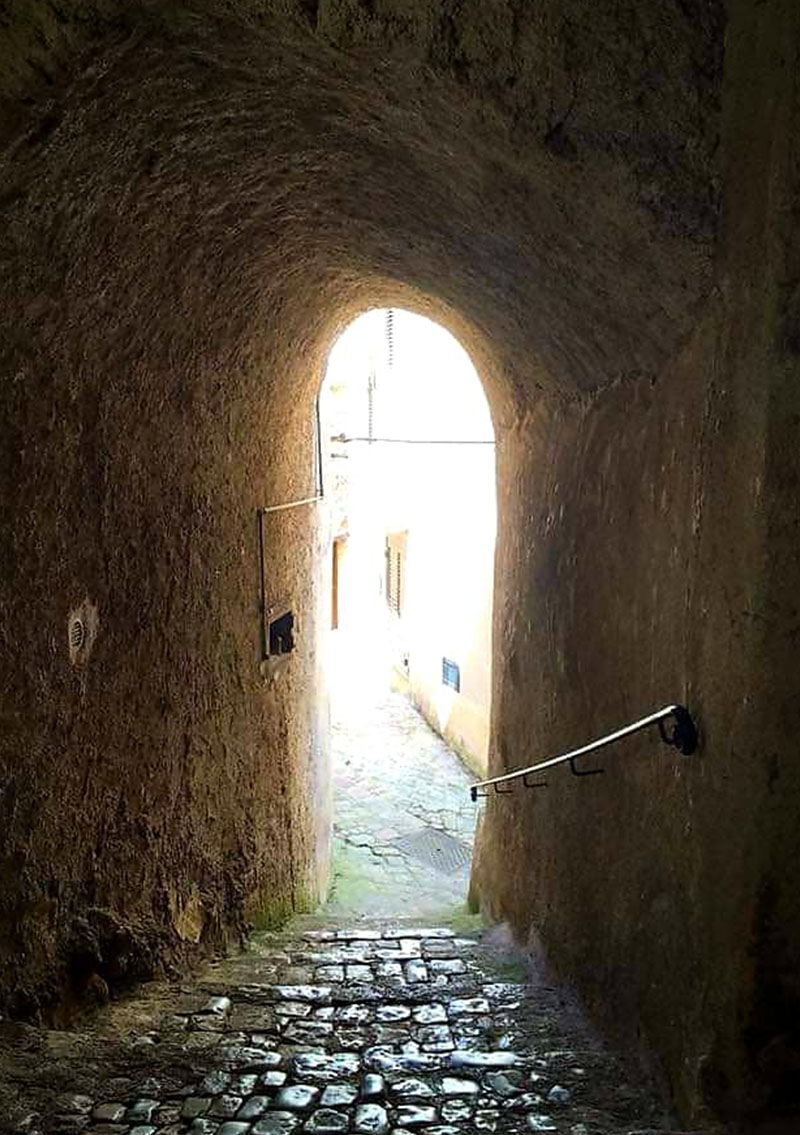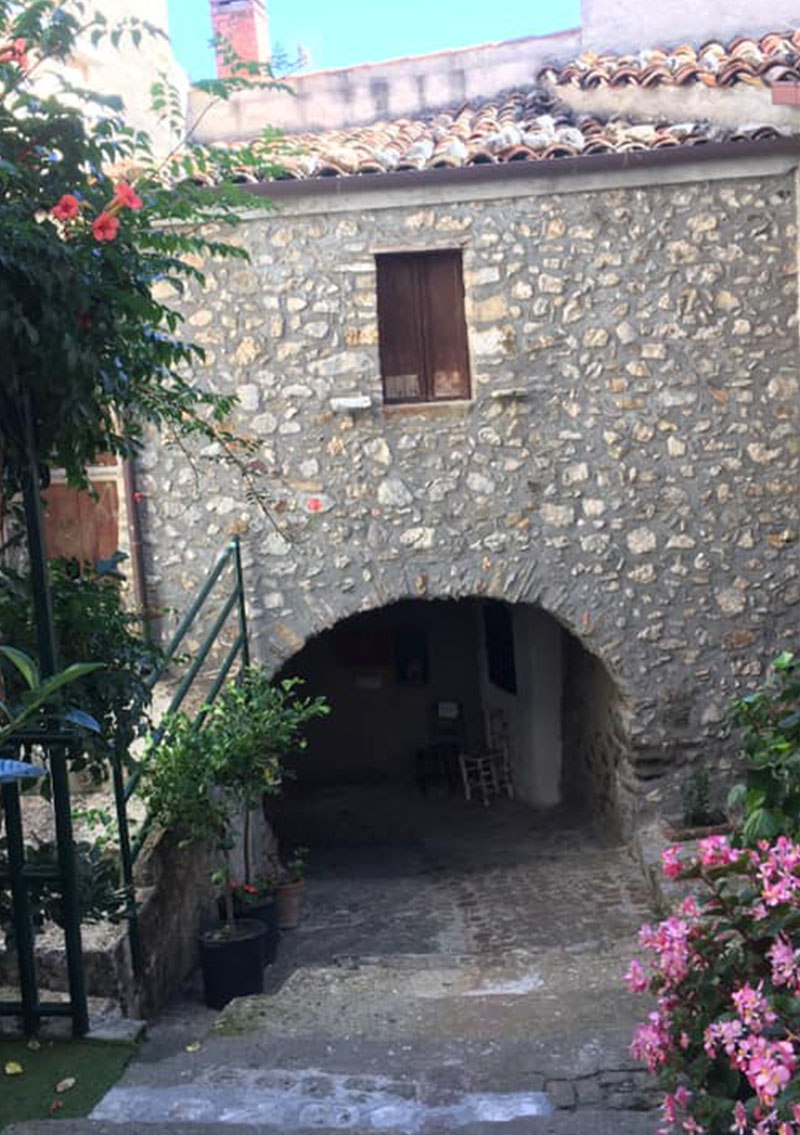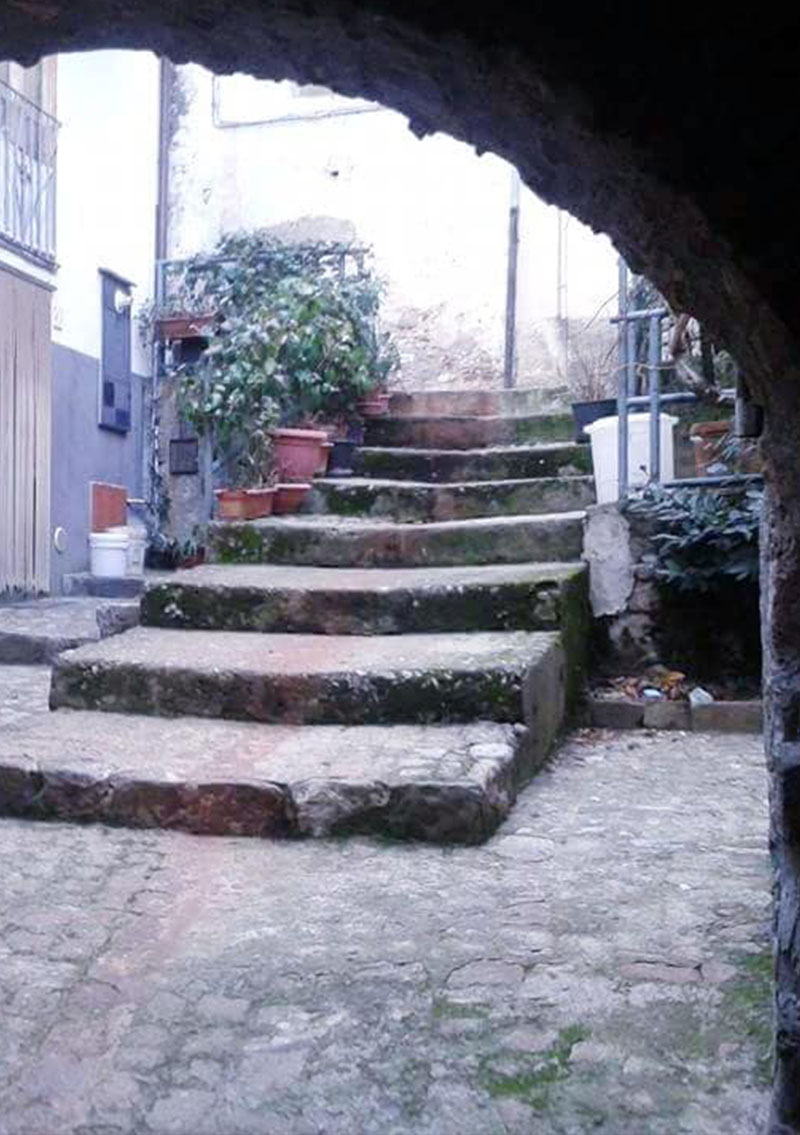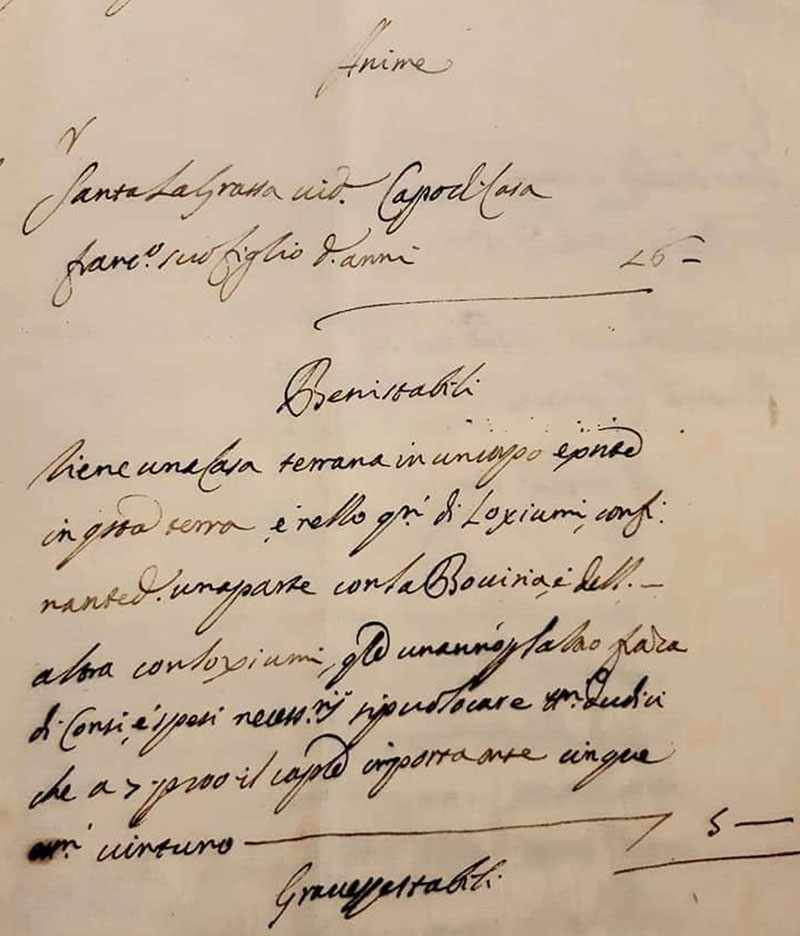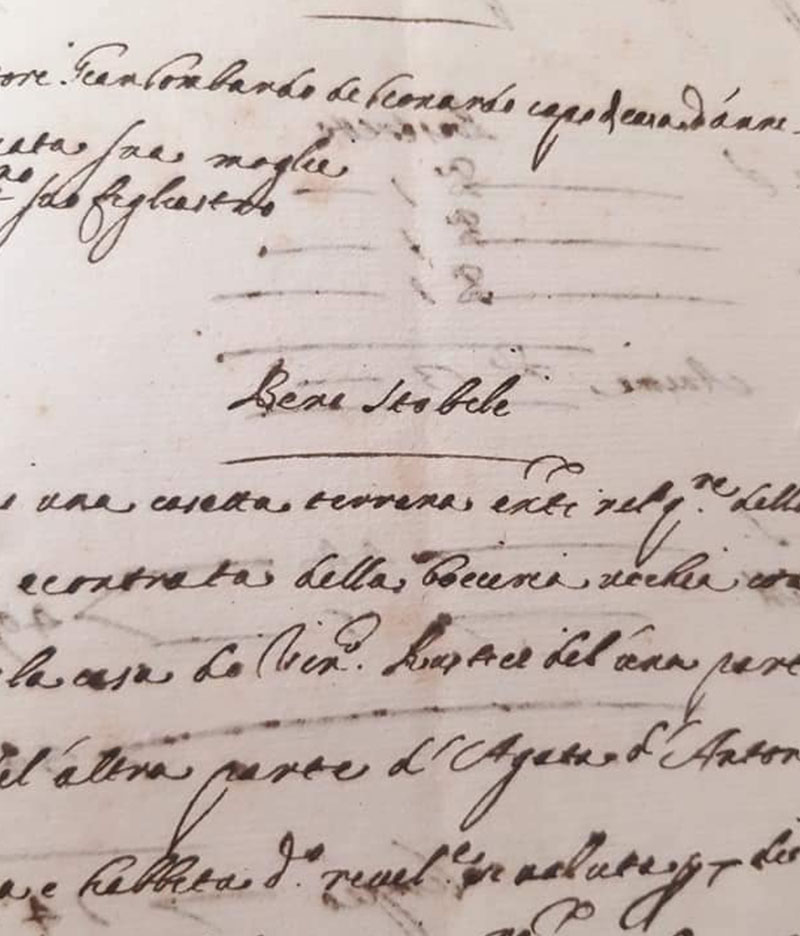According to the 16th century archival documents – the Revelations of Goods and Souls that are preserved at the State Archives of Palermo – it would seem that it is located in the district of la Scala, on the edge of a vineyard. With reference to these data, it is possible to locate this district as the widening of Via Notari with Via Pergola, where is a square and an alley connecting Via Roma (formerly Via Maestra) to Via Carlo Alberto (formerly Via della Santa). The”strata” or wrinkle of the Bucciria Vecchia was the area of the ancient market attested in Riveli until 1748:
Antonino Bellomo is 63 years old and the head of the household, Primavera is his wife, Johanello his son and he is 23 years old, Jacobo is his other son and is 18 years old, Catrinella his daughter reveals an house located in this land in the street of the “old vucciria”, adjacent to the house of Catrinj Schimmenti (Archive of State-Palermo, Riveli Tribunal Real Patrimonio, V. 1166, year 1584).
Bella di Polizzi is the household, Giulio Polizzi, her son, is 25 years old and reveals an house in the wrinkle of the old bucchiria, which is adjacent to the house of Dominico Intolisano and to the house of Giacobo di Bartholomeo (Archive of State- Palermo, Riveli Tribunal Real Patrimonio, V. 1166, year 1584).
Salvatori Gianlombardo has a house in the district of the Scala and in the district of the old bucciria, which is adjacent to the house of Vin zo Rustici and to the house of Agata d’Antoni (Archive of State-Palermo, Riveli Tribunale Real Patrimonio, V. 1172, f. 341, year 1636).



